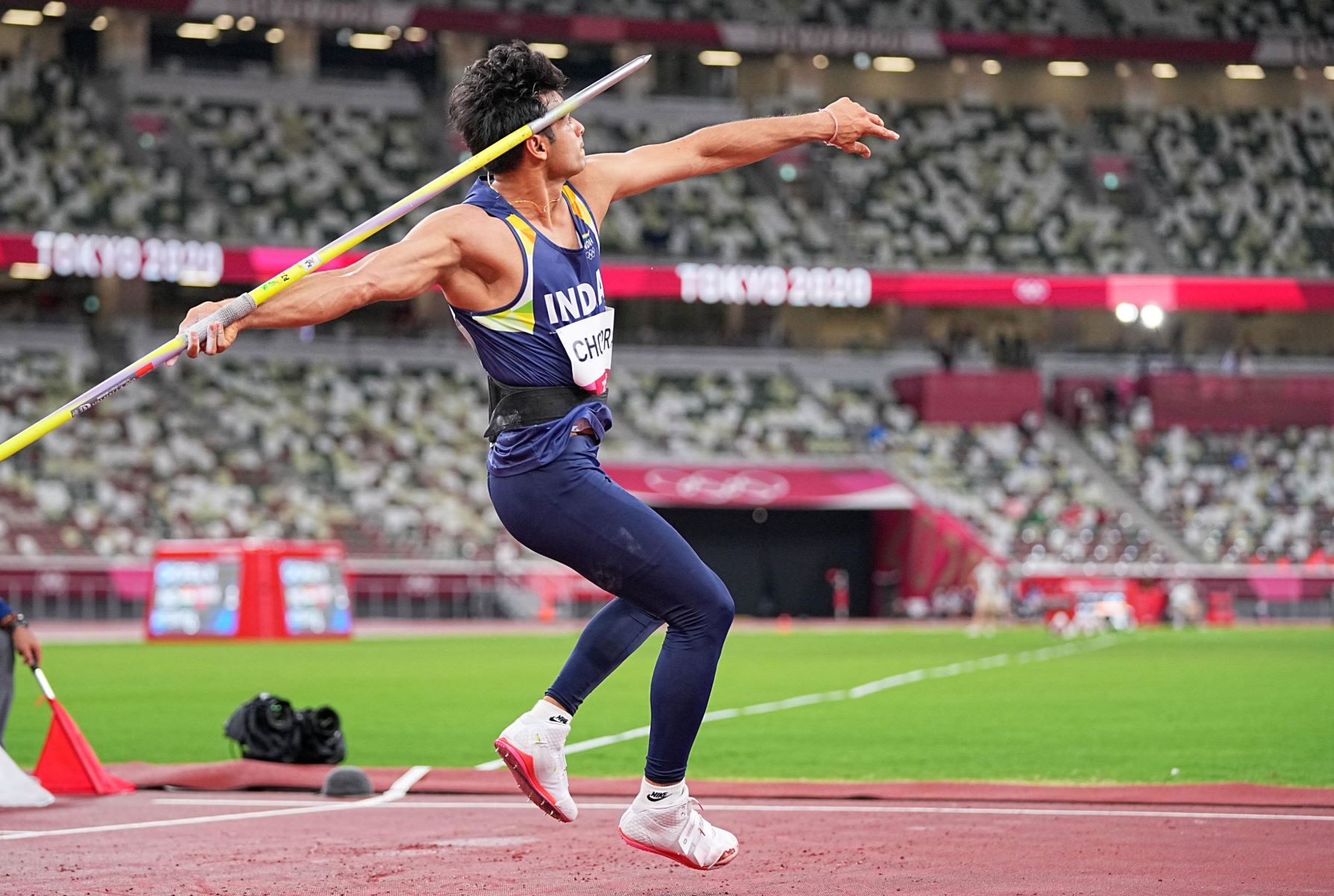Home>Misc>Featured>What Type Of Muscle Fibers Has The Longest Endurance


Featured
What Type Of Muscle Fibers Has The Longest Endurance
Modified: January 22, 2024
Discover the featured muscle fibers that are known for their exceptional endurance. Learn which type of muscle fibers can sustain prolonged activity and enhance your athletic performance.
Introduction
When it comes to endurance, not all muscle fibers are created equal. Our muscles are made up of a variety of different types of muscle fibers, each with its own unique characteristics and capabilities. Understanding the different types of muscle fibers and how they contribute to endurance can be key for athletes and fitness enthusiasts looking to optimize their performance.
Muscle fibers can be broadly categorized into three main types: Type I (slow-twitch) muscle fibers, Type IIa (fast-twitch oxidative) muscle fibers, and Type IIb (fast-twitch glycolytic) muscle fibers. Each of these muscle fiber types has its own specific characteristics that determine its endurance capacity.
Building endurance is crucial for activities that require sustained effort over a long period of time, such as distance running, cycling, or swimming. Endurance is defined as the ability of a muscle or group of muscles to sustain repeated contractions or to generate a consistent level of force over a prolonged period of time. Understanding which muscle fiber types have the longest endurance can help athletes and individuals tailor their training and exercise routines for optimal results.
In this article, we will explore each of the muscle fiber types in more detail, examine the factors that affect endurance in muscle fibers, and compare their endurance capabilities to determine which muscle fiber types have the longest endurance. By gaining a deeper understanding of these muscle fiber types and their endurance capacities, individuals can better strategize their training programs to improve their endurance performance.
Type I (Slow-Twitch) Muscle Fibers
Type I muscle fibers, also known as slow-twitch fibers, are characterized by their ability to contract at a slow and sustained rate. These muscle fibers are rich in mitochondria, which are responsible for aerobic energy production. This allows them to generate energy through oxidative metabolism, making them highly efficient in utilizing oxygen.
Slow-twitch muscle fibers are predominantly used during endurance activities that require low to moderate force production over a prolonged period of time, such as long-distance running or cycling. They are resistant to fatigue, enabling individuals to maintain their performance for extended durations.
These muscle fibers have a high capillary density, which means that they have a greater blood supply compared to other muscle fiber types. This is advantageous as it facilitates efficient delivery of oxygen and nutrients to the muscles, further enhancing their endurance capacity.
Furthermore, slow-twitch muscle fibers have a high content of myoglobin, a protein that stores oxygen. This allows them to sustain aerobic metabolism for longer durations, delaying the accumulation of lactic acid and preventing muscle fatigue.
Another significant characteristic of slow-twitch muscle fibers is their low force-generating capacity. While they may not produce large amounts of force, their endurance capabilities make them vital for activities that require prolonged muscle contractions without significant rest periods.
Training strategies that focus on developing Type I muscle fibers involve aerobic exercises such as long-distance running, swimming, or cycling. Continuous and moderate-intensity workouts are typically employed to stimulate the growth and adaptation of these muscle fibers.
Incorporating endurance training into a fitness regimen can lead to an increase in the proportion of Type I muscle fibers within the muscle, resulting in improved endurance performance and enhanced aerobic capacity.
Type IIa (Fast-Twitch Oxidative) Muscle Fibers
Type IIa muscle fibers, also known as fast-twitch oxidative fibers, possess characteristics that make them a hybrid between Type I and Type IIb muscle fibers. These muscle fibers have a moderate contraction speed and a relatively high resistance to fatigue, allowing them to sustain contractions for longer durations compared to Type IIb fibers.
Fast-twitch oxidative muscle fibers rely on both aerobic and anaerobic metabolic pathways to generate energy. They have a greater capacity for oxidative metabolism compared to Type IIb fibers, thanks to a higher mitochondria density and myoglobin content.
These muscle fibers are predominantly used during activities that require a combination of strength and endurance, such as sprinting, middle-distance running, and high-intensity interval training. They can produce a moderate amount of force and generate energy quickly, making them well-suited for activities that require bursts of speed or power.
Similar to Type I muscle fibers, Type IIa fibers also have a good capillary network, ensuring efficient oxygen and nutrient supply to the muscles. This helps delay the onset of fatigue and supports sustained performance over a longer duration.
Training strategies aimed at improving Type IIa muscle fibers often involve a combination of endurance and strength training. This includes activities such as interval training, circuit training, and resistance exercises performed with moderate weights and higher repetitions.
By engaging in these training methods, individuals can stimulate Type IIa muscle fiber adaptation, leading to an increase in their endurance capacity and overall performance.
Type IIb (Fast-Twitch Glycolytic) Muscle Fibers
Type IIb muscle fibers, also known as fast-twitch glycolytic fibers, are characterized by their ability to contract quickly and generate a high amount of force. These muscle fibers rely primarily on anaerobic metabolism, utilizing stored glycogen for energy production.
Fast-twitch glycolytic muscle fibers are designed for short bursts of intense activity that require rapid force production, such as weightlifting, jumping, and sprinting. They are well-suited for activities that demand explosive power, but their endurance capacity is relatively limited.
Compared to Type I and Type IIa muscle fibers, Type IIb fibers have a lower mitochondrial density and myoglobin content. This means that they have a reduced ability to utilize oxygen for energy production, leading to earlier fatigue during sustained activity.
These muscle fibers rely on anaerobic glycolysis, a process that breaks down glucose into energy without the need for oxygen. This allows them to generate energy quickly but with a limited supply. As a result, Type IIb fibers fatigue more quickly, making them less suited for endurance-related activities.
Training strategies aimed at Type IIb muscle fibers typically involve high-intensity, short-duration activities such as sprint training, plyometrics, and resistance exercises performed with heavy weights and low repetitions.
While Type IIb muscle fibers may not have the same endurance capabilities as Type I or Type IIa fibers, they play a crucial role in explosive activities that require maximum force and power. The ability to recruit and develop these muscle fibers is essential for enhancing performance in activities that rely on short bursts of high-intensity effort.
Factors Affecting Endurance in Muscle Fibers
Endurance in muscle fibers is influenced by various factors that can impact their performance and ability to sustain contractions over a prolonged period of time. These factors include:
1. Genetic Makeup: The proportion of different muscle fiber types in an individual’s muscles is largely determined by their genetic makeup. Some individuals may naturally have a higher percentage of Type I muscle fibers, while others may have a greater proportion of Type II muscle fibers. This genetic predisposition can influence an individual’s endurance capabilities.
2. Training and Exercise: Regular endurance training can have a significant impact on improving the endurance capacity of muscle fibers. Endurance-based exercises, such as long-distance running, cycling, or swimming, can stimulate physiological adaptations in the muscle fibers, leading to increased endurance performance. Specific training protocols can target the development of different muscle fiber types, optimizing their endurance potential.
3. Oxygen Utilization: The ability of muscle fibers to utilize oxygen is a crucial factor in endurance. Oxygen supply to the muscles is vital for aerobic energy production. Factors such as efficient lung function, strong cardiovascular health, and a well-developed capillary network can enhance oxygen delivery to the muscles, improving their endurance capacity.
4. Nutritional Support: Proper nutrition plays a vital role in supporting muscle endurance. Consuming a balanced diet that includes adequate carbohydrates, proteins, and fats provides the energy and nutrients necessary for optimal muscle function. Nutritional strategies, such as carbohydrate loading before endurance events, can help maximize energy availability and prolong endurance performance.
5. Muscle Fiber Adaptation: Regular endurance training can stimulate physiological adaptations in muscle fibers, leading to improved endurance capacity. These adaptations can include an increase in the number and size of mitochondria within the muscle fibers, enhanced oxidative enzyme activity, and improved energy production and utilization pathways. These adaptations allow muscle fibers to better withstand sustained contractions and delay the onset of fatigue.
6. Age and Gender: Age and gender can also influence endurance in muscle fibers. Generally, muscle endurance tends to decline with age as muscle mass decreases and physiological processes become less efficient. Additionally, gender differences in muscle fiber composition and hormonal profiles can impact endurance capabilities.
Understanding these factors can help individuals tailor their training regimens and lifestyle choices to optimize their muscle fiber endurance and improve their overall performance.
Comparing the Endurance of Muscle Fiber Types
When it comes to endurance, certain muscle fiber types exhibit longer-lasting capabilities compared to others. Let’s compare the endurance of the three main muscle fiber types: Type I (slow-twitch), Type IIa (fast-twitch oxidative), and Type IIb (fast-twitch glycolytic).
Type I (slow-twitch) muscle fibers are highly resistant to fatigue and have the longest endurance capacity among the three types. These muscle fibers are designed for sustained, low-intensity activities that require prolonged contractions, such as long-distance running or swimming. Slow-twitch fibers rely on oxidative metabolism and have a high oxygen-carrying capacity due to their abundant mitochondria and myoglobin content. As a result, they can produce energy aerobically, delaying the accumulation of fatigue-inducing lactic acid.
Type IIa (fast-twitch oxidative) muscle fibers also exhibit good endurance capabilities, although not as long-lasting as Type I fibers. They have a moderate resistance to fatigue and can sustain contractions for a reasonable duration during activities that require a mix of strength and endurance, like middle-distance running or high-intensity interval training. These muscle fibers possess a higher mitochondrial density and myoglobin content compared to Type IIb fibers, allowing for greater aerobic energy production and delaying fatigue onset.
On the other hand, Type IIb (fast-twitch glycolytic) muscle fibers have the lowest endurance capacity. They are primarily designed for high-intensity, explosive activities that require rapid force production, such as weightlifting or sprinting. Type IIb fibers rely heavily on anaerobic metabolism and have a limited ability to sustain contractions over an extended period. Due to their reliance on glycogen stores and reduced oxygen utilization, they fatigue quickly compared to Type I and IIa fibers.
It is important to note that individuals vary in their muscle fiber composition, with some individuals naturally having a higher proportion of Type I fibers, while others may have a higher proportion of Type II fibers. However, through proper training and exercise, individuals can still improve the endurance capabilities of their muscle fibers, regardless of their initial fiber composition.
By incorporating a combination of endurance-based training, strength training, and appropriate nutrition, athletes and fitness enthusiasts can optimize their muscle fiber endurance and improve their overall performance. Tailoring training programs to target specific muscle fiber types can help individuals maximize their endurance potential and achieve their desired goals.
Conclusion
In conclusion, understanding the different types of muscle fibers and their endurance capabilities is essential for athletes and individuals looking to enhance their performance. Muscle fibers can be broadly categorized into three main types: Type I (slow-twitch) muscle fibers, Type IIa (fast-twitch oxidative) muscle fibers, and Type IIb (fast-twitch glycolytic) muscle fibers.
Type I muscle fibers, also known as slow-twitch fibers, have the longest endurance capacity. With a high resistance to fatigue, these muscle fibers are ideal for sustained, low-intensity activities that require prolonged contractions. Training strategies that focus on aerobic exercises can stimulate the growth and adaptation of Type I muscle fibers, leading to improved endurance performance.
Type IIa muscle fibers possess moderate endurance capabilities and are utilized during activities that require a combination of strength and endurance. These fibers rely on both aerobic and anaerobic energy systems and can be developed through a combination of endurance and strength training strategies.
Type IIb muscle fibers have the lowest endurance capacity and are designed for short bursts of intense, high-force activities. While they may fatigue quickly, these fibers are vital for explosive movements and strength-based exercises. Training methods that target Type IIb muscle fibers usually involve high-intensity, short-duration activities.
Factors such as genetic makeup, training and exercise, oxygen utilization, nutritional support, muscle fiber adaptation, age, and gender can impact the endurance of muscle fibers. Understanding these factors allows individuals to tailor their training programs and lifestyle choices to optimize their endurance performance.
By incorporating a balance of endurance training, strength training, and proper nutrition, individuals can improve the endurance capabilities of their muscle fibers, regardless of their initial fiber composition. This can lead to enhanced athletic performance, increased aerobic capacity, and improved overall endurance.
Ultimately, by understanding the endurance differences among muscle fiber types and implementing targeted training strategies, individuals can optimize their muscle fiber endurance and excel in their chosen athletic pursuits.









